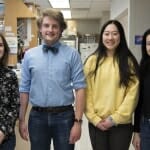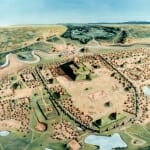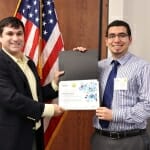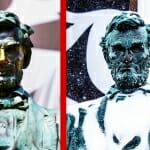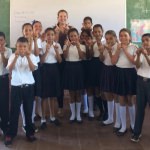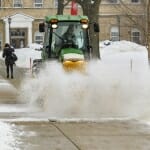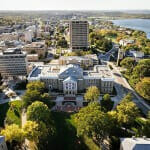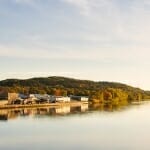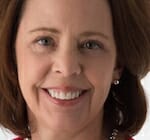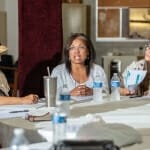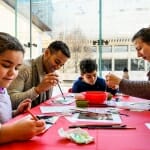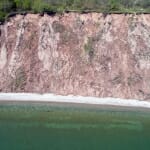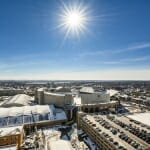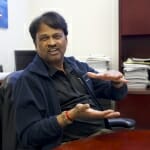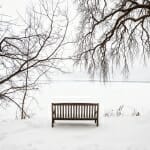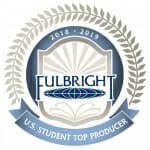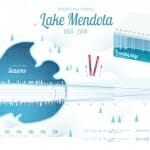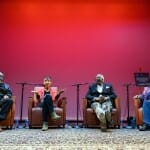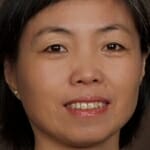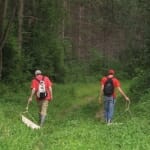Radiation-resistant E. coli evolved in the lab give view into DNA repair
Scientists in the University of Wisconsin–Madison Department of Biochemistry are blasting E. coli bacteria with ionizing radiation once a week to watch evolution happen in real time as the bacteria become radiation resistant.
Ancient poop helps show climate change contributed to fall of Cahokia
A study provides a direct link between changes in Cahokia’s population size as measured through a unique fecal record and environmental data showing evidence of drought and flood.
A pharmacist-driven intervention to help veterans breathe easier
The service led by a UW–Madison pharmacy professor helps veterans who need it most, when they’ve recently been discharged from the hospital or emergency room with an exacerbation, he says.
Get Social: Remember, there’s a warm, non-snowy season too
Take a look at these social media posts, and it will refresh your memory. For each winter scene on campus, we've reached back to a scene at the same site from last summer. To offer perspective.
Peace Corps Week to feature National Teacher of the Year
UW-Madison will celebrate the 58th anniversary of the establishment of Peace Corps with a week of events, from Feb. 26 to March 2.
You think clearing your sidewalk is a big job?
The UW–Madison grounds crew was busy yet again on Wednesday, Feb. 20, clearing snow on the 936-acre campus.
Listening sessions scheduled for new provost search
The 17-member search and screen committee is interested in knowing what qualities people would like them to look for as recruitment and evaluation of candidates begins.
UniverCity Year program to partner with Pepin County
Launched in 2016 with the Wisconsin Idea in mind, this program facilitates engagement between the UW–Madison learning community and localities across Wisconsin, bridging research and community knowledge to address some of the greatest challenges facing Wisconsin’s local governments.
School of Education dean elected to National Academy of Education
Much of Hess’ research centers on examining how teachers engage their students in discussions of highly controversial political and constitutional issues.
Program empowers communities to overpower diabetes
A UW–Madison program aims to give African Americans in Milwaukee strategies to maintain healthy lifestyles that will help prevent and/or manage Type 2 diabetes.
Black History Month art event
In celebration of Black History Month, an ArtSpin outreach event gave participants the chance to create art in the style of American contemporary painter and silhouette artist Kara Walker.
As Lake Michigan rises, bluffs collapse and geologists explore
UW-Madison researchers are more than one year into a project sponsored by Wisconsin Sea Grant aimed at a better understanding how the bluffs erode, and what triggers their collapse.
Sparkling campus
When the sun finally came out over campus this week, it sparkled. Several rounds of snowfall in recent weeks — and 37 inches so far this winter — gave it a pristine look, once the walks and streets were cleared.
He professes protein: Srinivasan Damodaran has thoughts for food
If you have a protein that needs a bit of self-improvement, Damodaran may be your guru. An expert in soy and milk protein, he’s invented soy-based glues and plant-based absorbents for industrial cleanups and diapers.
Get Social: Ain’t no cure for the midwinter blues
Mid-winter brings plenty of beauty, but also a certain weariness with the cold, desolate landscape. In this week's Get Social, look February right in the face.
UW-Madison among top producers of Fulbright students
Eighteen students from the University of Wisconsin–Madison accepted Fulbright awards for academic year 2018-2019, placing the university at No. 15 among research institutions.
Reddit competes to visualize Madison’s prized Lake Mendota ice data
Data visualizations generated by a Reddit competition reveal a concerning trend that’s been known to scientists at UW–Madison and elsewhere for decades: ice is disappearing on Lake Mendota.
Recalling the 1969 Black Student Strike
Organizers of the 1969 Black Student Strike at UW–Madison recalled the turmoil and the excitement of the campus-wide student strike, during a panel Monday night at Memorial Union's Play Circle.
Cell component breakdown suggests possible treatment for multiple neural disorders
New UW–Madison research provides the first direct evidence that mitochondria dysfunction contributes to fragile X and autism, raising hope for new therapeutic developments.
Center fights spread of tick- and mosquito-borne diseases with research, outreach
The Midwest Center of Excellence for Vector-Borne Disease was established at UW–Madison in 2017 with a $10 million grant from the Centers for Disease Control and Prevention to research illnesses transmitted by ticks and mosquitoes (the vectors, in this case) and train new professionals who can stop the diseases from spreading.

